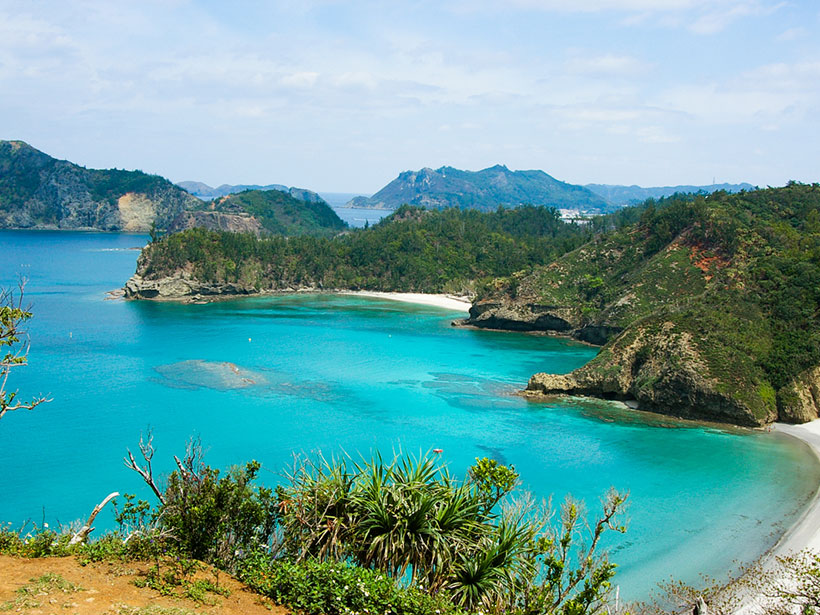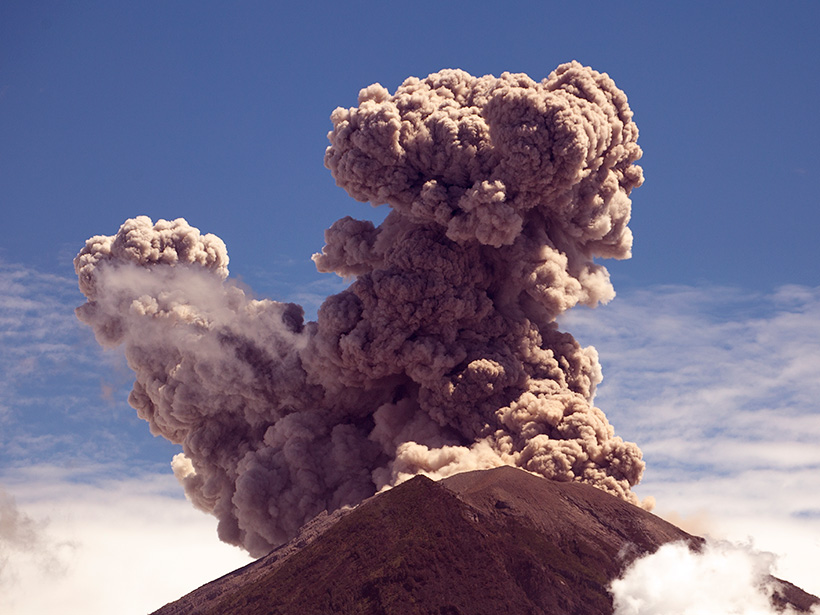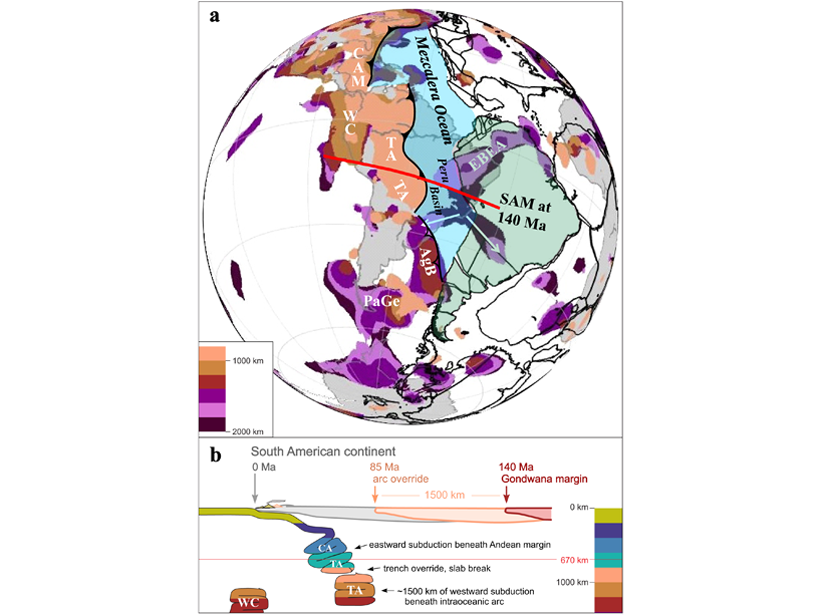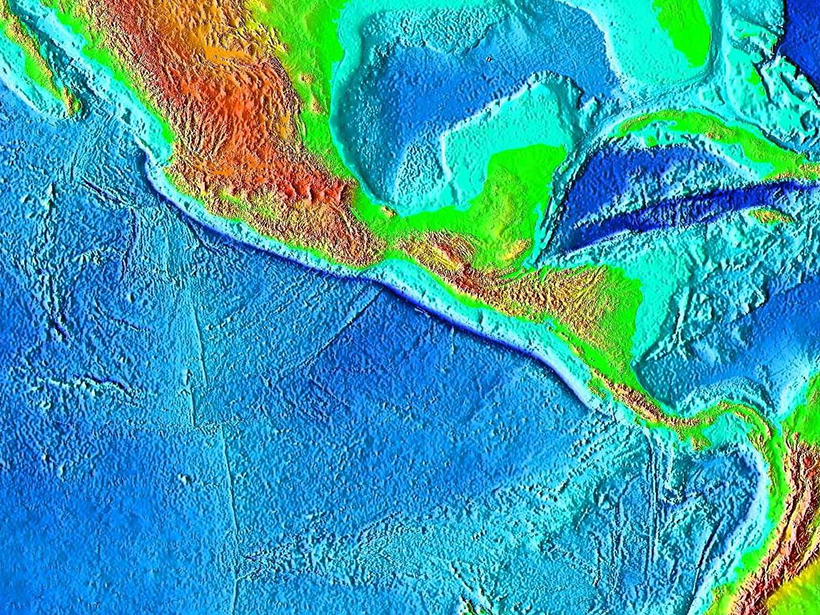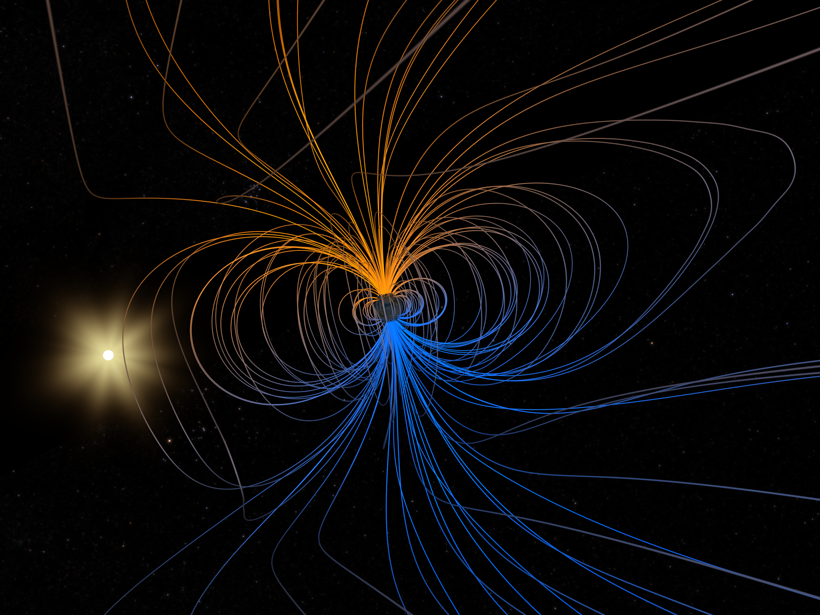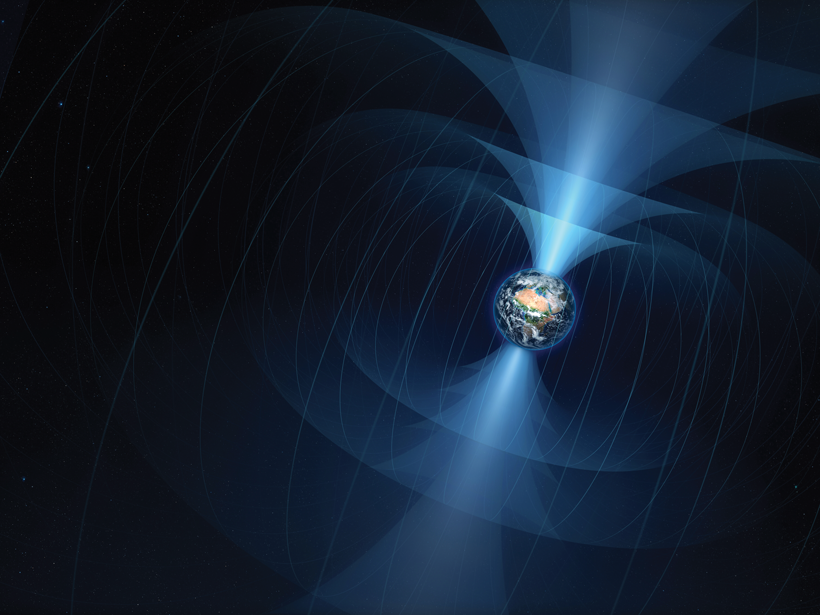The algorithm RevPET automatically reverses the complex multi-phase fractional crystallization path of oceanic basalts and offers new perspectives for advancing mantle thermobarometry.
Earth’s interior
First Report of Seismicity That Initiated in the Lower Mantle
A 4D back-projection method revealed that aftershocks of the 2015 earthquake beneath the Ogasawara (Bonin) Islands occurred as deep as about 750 kilometers.
Lava from Bali Volcanoes Offers Window into Earth’s Mantle
Lava from the Agung and Batur volcanoes provides a near-pristine picture of Earth’s mantle and raises questions about all volcanoes along the Indonesian Sunda Arc and beyond.
Previous Intra-oceanic Subduction Found Beneath South America?
Newly mapped fast velocity slabs in the lower mantle may be remnants of westward dipping intra-oceanic subduction, before flipping to the present eastward subduction beneath South America at 85 Ma.
Seafloor Seismometers Look for Clues to North Atlantic Volcanism
Did the mantle plume that fuels Iceland’s volcanoes today cause eruptions in Ireland and Great Britain long ago? A new project investigates, while also inspiring students and recording whale songs.
Peter M. Shearer Receives 2020 Inge Lehmann Medal
Peter M. Shearer was awarded the 2020 Inge Lehmann Medal at the virtual AGU Fall Meeting in December. The medal is for “contributions to the understanding of the structure, composition, and dynamics of the Earth’s mantle and core.”
Watering Down the Mantle
The cooling of planet Earth over time increased the water carrying capacity of the mantle and could have shrunk the oceans.
Subduction May Recycle Less Water Than Thought
A new analysis of seismic data from the Middle America Trench suggests that previous calculations have vastly overestimated the total amount of water transported to the mantle worldwide.
The Wobbly Anomaly and Other Magnetic Weirdness
From the connection between Earth’s core and life on the surface, way out to the ends of the solar system, this month’s issue of Eos takes a look at the study of magnetic fields.
The Herky-Jerky Weirdness of Earth’s Magnetic Field
Dented, erratic, and wandering, our field is constantly changing its mind.


